MXA’S 2006 YAMAHA YZ125 TEST
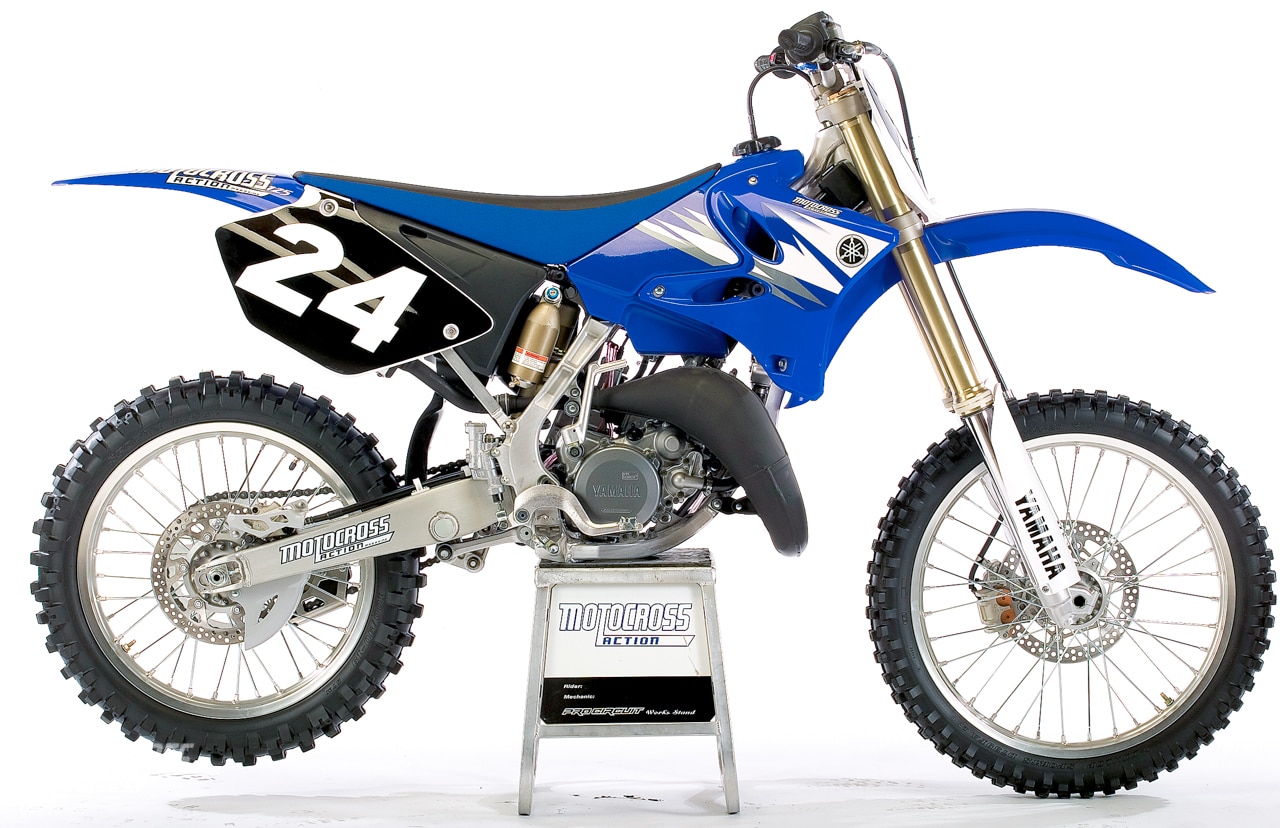 This archived article of the 2006 Yamaha YZ125 was found in the November 2005 edition of Motocross Action Magazine.
This archived article of the 2006 Yamaha YZ125 was found in the November 2005 edition of Motocross Action Magazine.
One of the biggest misconceptions about the 2006 Yamaha YZ125 two-stroke is that it is “unchanged” from last year. In fact, Yamaha made 20 technical improvements to the YZ125 for 2006. These mods are compounded by the fact that the YZ125 was new from the ground up in 2005. The end result is an incredible 125cc two-stroke.
For those who think that the two-stroke is dead, it should be noted that in 2005 Yamaha sold 28 percent more YZ125s than the year before, giving Yamaha over 40 percent of all 125cc bike sales. Those sales figures are nothing to take lightly–which is why Yamaha’s engineers didn’t just give the 2006 model some BNG (Bold New Graphics) and call it a day. They zeroed in on the problem areas and tried to fix them.
Have they succeeded? The MXA wrecking crew was determined to find out.
Q: IS THE 2006 YZ125 FASTER THAN THE 2005 MODEL?
A: Yes. Not a quantum leap faster, the 2006 is incrementally better in power transition, midrange pull and over-rev.
Q: WHAT DID YAMAHA DO TO THE 2006 YZ125 ENGINE
A: Here is the list.
(1) Cylinder head. The shape of the combustion chamber’s squish band has been altered by radiusing out the edge of the band. The gentler slope of the squish provides a better flame path, cleaner burn and crisper low-to-mid transition.
(2) Carburetor. For better throttle response, the carb gets one less bypass port to lessen fuel flow at low rpm. When combined with a new 6BFY42-74 needle, the result is a leaner mixture off idle, which snaps up the engine response time.
(3) Power valve. Thanks to a stiffer power valve governor spring, the 2006 valve is open for an extra 500 rpm (up from 9000 rpm to 9500 rpm).
(4) Ignition. New CDI mapping and a platinum-alloy plug produce a more intense spark. The new plug is an NGK BR9EVX.
Q: IS THE 2006 YZ125 ENGINE BETTER THAN THE 2005 ENGINE?
A: Yes and no. Yes, it has better throttle response and the ability to pull over the top-end without tapering off as quickly. But, these are subtle changes. They are real and quantifiable, but they aren’t life changing. The 2006 engine is better than the 2005 engine, but we wouldn’t spend a big chunk of dough to get these modest powerband improvements. Our test bike made 34.4 horsepower.
Q: IS THE 2006 YAMAHA YZ125 BETTER THAN A YZ250F FOUR-STROKE?
A: We’d be delusional if we suggested that the 2006 YZ125 is a better racing machine than the YZ250F four-stroke. It isn’t better–although in some situations it does have the upper hand.
Under what conditions is the YZ125 better than a YZ250F? (1) On a dirt start, but not one with a long starting straight. (2) In tight twisty corners, where instant throttle response pays big dividends. (3) In steep, choppy whoops, where the light front end can skim across the top without dropping in. (4) On steep jumps that favor the lightweight and flickability of a two-stroke.
Where is the YZ125 at a disadvantage to the YZ250F four-stroke. (1) Long starts where the extra torque of the four-stroke can build up speed. (2) Concrete starting lines are a boon to four-strokes and anathema to two-strokes. (3) Hard-pack dirt favors four-strokes because they hook up better on slippery terrain with their every-other-stroke engine pulses. (4) Big hills are where the torque of a four-stroke really shines. (5) Off camber corners are easy to maneuver on a four-stroke because its powerband is twice as wide as a two-stroke’s.
Q: WHY SHOULD SOMEONE BUY A YAMAHA YZ125 TWO-STROKE?
A: There are three good reasons:
(1) Fun: Two-strokes are a blast to ride. They rev quicker than a four-stroke and, when you are jamming from gear to gear, you feel like you are flying.
(2) Cost. Although the startup price is about the same, two-strokes are less expensive to maintain. It costs close to two grand to hop-up a four-stroke to AMA National standards. A two-stroke would cost about one-fourth of that. Additionally, with fewer moving parts, the rebuild cost is about half for a YZ125.
(3) Weight. It would cost several thousand dollars to knock 20 pounds off a 250cc four-stroke (if it could be done at all). In stock trim, a YZ125 is 20 pounds lighter as it sits on the showroom floor. Trust us, you notice that big of a weight reduction.
Q: HOW MANY GEARS DOES IT HAVE?
A: We love the YZ125’s close-ratio, six-speed gearbox. One caveat: don’t think that the six-speed is a just a five-speed with an extra gear on top—it’s not. It is six close-ratio gears that magnify the powerband—and require the rider to shift more often.
Q: ARE THERE ANY CHANGES TO YAMAHA’S ALUMINUM FRAME?
A: Yamaha’s very innovative plug-and-play aluminum frame was not changed for 2006 (after all, it was brand new last year). But, the swingarm was. Unfortunately, you won’t be able to point out the swingarm mod to your friends, because it is an internal rib that is not visible to the naked eye.
Q: ARE THERE ANY CHANGES TO YAMAHA’S ROLLING CHASSIS?
A: You bet. Here’s the list.
(1) Suspension. The fork and shock are totally new for 2006.
(2) Shock spring. Yamaha will spec all of its 2006 motocross bikes with titanium shock springs. This mod saves over a pound of weight. Yamaha buys its titanium in America and has it coiled in Japan.
(3) Front brake lever. To make the front brake lever more comfortable, Yamaha removed the thin portion up by the rider’s index finger and made the lever full-width across its length.
(4) Quick-adjust. The on-the-fly clutch adjuster gets a much larger quick-adjust knob to make it easier to manipulate.
(5) Triple clamps. The clamps have two major changes. First, the handlebar mounts are adjustable (across a 10mm range by rotating the bar mounts). Second, the center of the fork tubes have been positioned 2mm farther apart (from 190mm to 192mm). The extra width increases stability, but, because of new castings at the dropout, does not require a new front wheel, axle or axle spacers.
(6) Rear brake caliper. The profile of the rear brake caliper has been lowered to give it more clearance against the silencer. The 2006 caliper is all-new, as is the pad material and the position of the bleed screw. Of course, the plastic rear brake caliper and rear rotor guards have been altered to match the new shape.
(7) Saddle. Yamaha used softer seat foam for 2006, but they added 10mm more of it to the center of the seat.
(8) Plastic. There is a new front number plate and front fender, but only the number plate is easily recognizable as a new part (thanks to a crease down its centerline).
Q: WHAT’S NEW ABOUT KAYABA’S NEW SSS FORKS?
A: The technology involved in fork design is heading closer to a unified concept. Last year, Kayaba produced a fork that bore a striking resemblance to Showa’s Twin-Chamber forks (and here called “Showabas” because of the similarities). This year, the gap between Kayaba and Showa has closed even more.
Kayaba’s new design is labeled SSS (Speed Sensitive System), which would normally be little more than tech-speak, but speed-sensitive damping is a big plus for Kayaba’s forks. Why so? There are two types of damping: position-sensitive and speed-sensitive. Previous Kayaba forks were 70 percent position-sensitive, which means that the damping rates were dictated by the position of the fork’s piston inside the cartridge rod. It is a simple system: the farther the piston moves down in the cartridge rod, the stiffer the damping gets.
For 2006 the Kayaba forks will be 90 percent speed-sensitive. The damping rate is determined by the speed at which the piston moves though the cartridge rod. Switching from 30 percent speed-sensitive damping to 90 percent for 2006 means Yamaha’s forks will stay higher in their stroke, have a more linear damping rate and resist bottoming.
Q: DO THE KAYABA SSS FORKS WORK BETTER THAN LAST YEAR’S FORKS?
A: Unquestionably. The speed-sensitive damping has a more linear damping curve. What does that mean? It starts out firm and gets steadily firmer as it goes. There are no dips in the damping curve. It looks like a sales chart for Starbucks—steadily climbing upwards. How does this differ from last year’s damping curve? In 2005 Yamaha was mostly concerned with resisting bottoming, so the damping started out very light, stayed light through the midstroke and then zoomed upwards like the Blue Angels at the end of the fork travel.
It’s no secret that a motocross fork needs to ride higher in its stroke over small bumps so that it can re-cock to full travel in preparation for big hits. Yamaha’s 2006 forks ride higher, balance the chassis under acceleration and don’t dive as much under braking. The SSS forks are better on every size bump and work with the chassis instead of against it. This is a major improvement. Last year’s Showaba forks were good—the new SSShowabas are better.
Q: WHAT ABOUT THE SHOCK?
A: No kidding, this is a works shock absorber. It has a 2mm-larger shock shaft (18mm instead of 16mm), Kashima-coated internals (to reduce friction), 30 percent larger reservoir, and a titanium shock spring. This baby works.
Q: IS YAMAHA’S TITANIUM SPRING THE CAT’S MEOW?
A: It’s no secret that the MXA wrecking crew has had bad luck with aftermarket titanium shock springs. They are rarely rated correctly, they have a tendency to deaden their top and bottom coils (which ramps the spring rate sky high midway through the stroke), and they come in one length with accessory collars making up for the incorrect length.
Does Yamaha’s Ti spring have any of these negatives? No. Why not?
(1) Yamaha custom builds every spring to fit their Kayaba shock, thus the spring dimensions are accurate.
(2) Yamaha designed special plastic collars that interlock between the top and bottom coils to stop them by coil binding.
(3) Yamaha buys American titanium, ships it to Japan for coiling and checks the spring rate of every spring before installation. The 4.7 kg/mm spring rate is guaranteed.
Yamaha has pulled a coup with their Ti spring. It saves weight without any of the normal downsides of titanium springs.
Q: WHAT DID WE HATE?
A: The hate list:
(1) Graphics: You can’t get a 50th Anniversary yellow-and-black YZ125. Too bad.
(2) Rear brake pedal: For some reason it was tucked in too much. We bent it out to make it more accessible.
(3) Titanium footpegs: Ti is a catchy marketing tool, but losing a few ounces down low on the frame is not noticeable. Give us wider 57mm steel pegs and keep the Ti.
Q: WHAT DID WE LIKE?
A: The like list:
(1) Suspension: In 2004 Yamaha went from 46mm to 48mm Kayabas. In 2005, they stepped up the damping with their AOSS Showaba design. For 2006, they have taken the program a step further. Good stuff.
(2) Weight: At 197 pounds, the YZ125 is closer to the AMA weight limit than any bike made.
(3) Bar mounts: If you don’t like Yamaha’s bar positioning, you can rotate the stock mounts forward 10mm. If you don’t like that, you can replace the bar mounts with aftermarket units.
(4) Handlebars: Renthal, enough said.
(5) Rear tire: The D739 hard track tire has been replaced by an intermediate-terrain D756.
Q: WHAT DO WE REALLY THINK?
A: Two-stroke guys are mostly holdouts. They are like the warriors of Sparta or Masada. They refuse to give up against overwhelming odds. Fortunately for 250cc two-strokes, the holdouts are older and wiser. The 125 class is occupied by status-conscious teenagers—they go with the flow instead of their hearts. The tide is turning four-stroke. But, if you want to stand and fight, the YZ125 is the perfect weapon.


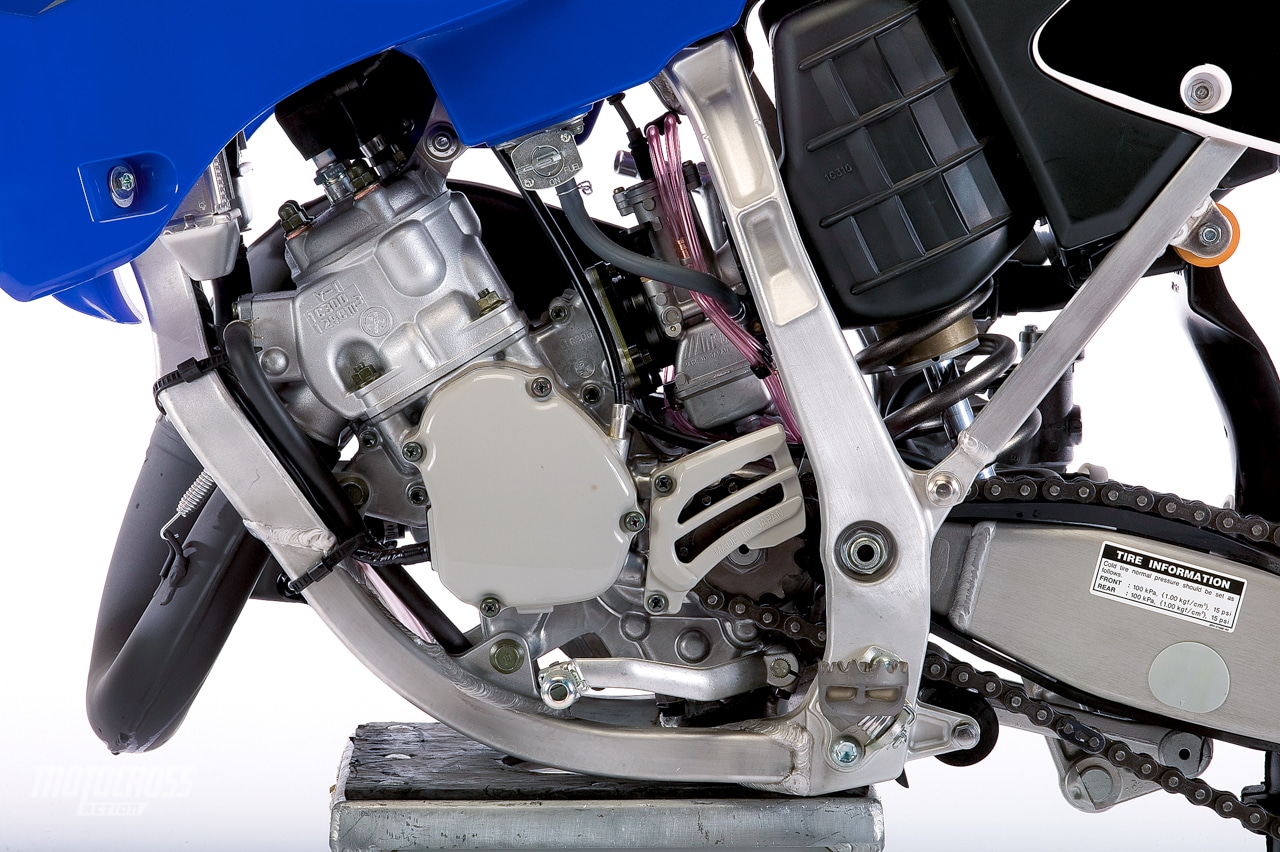

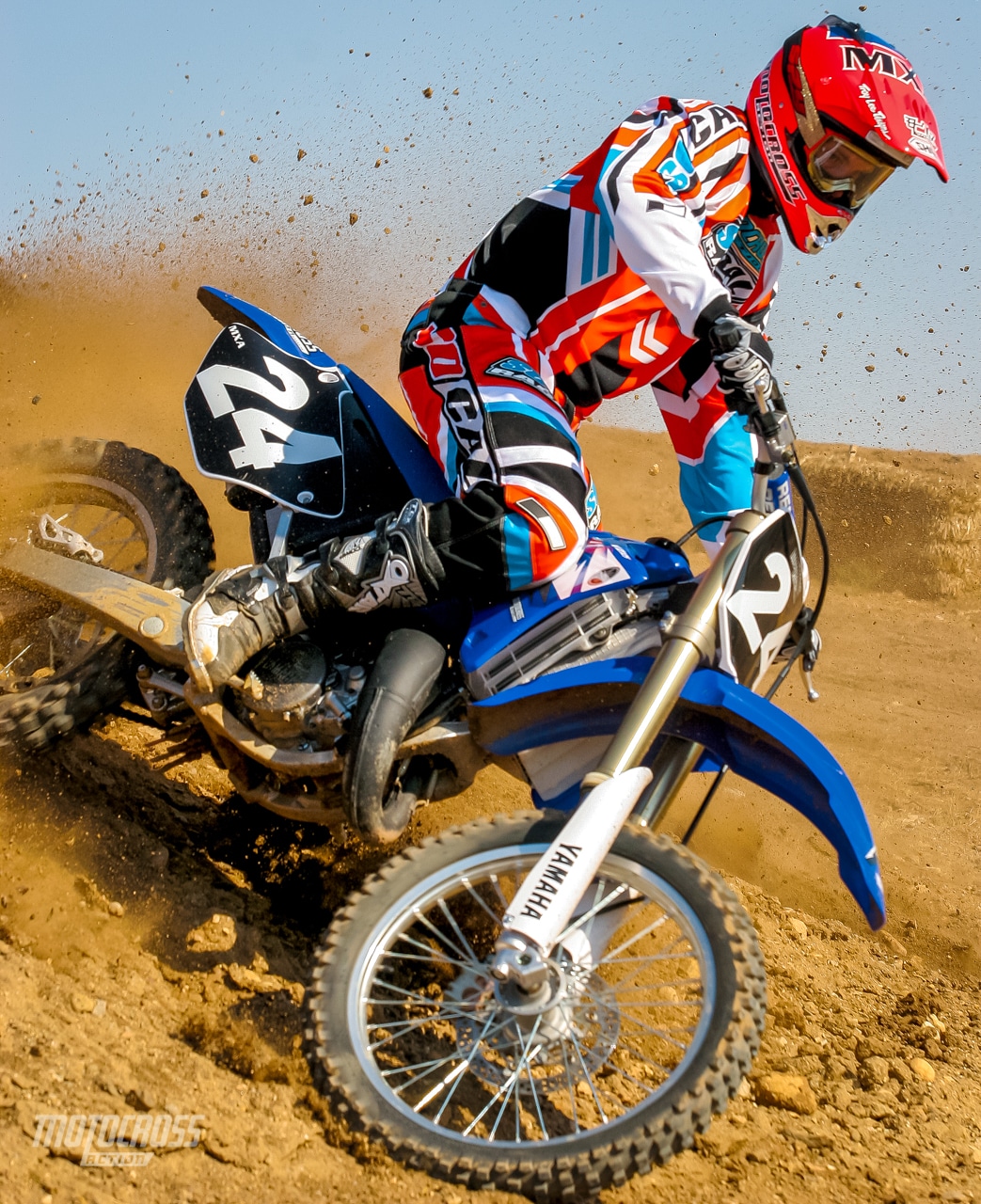

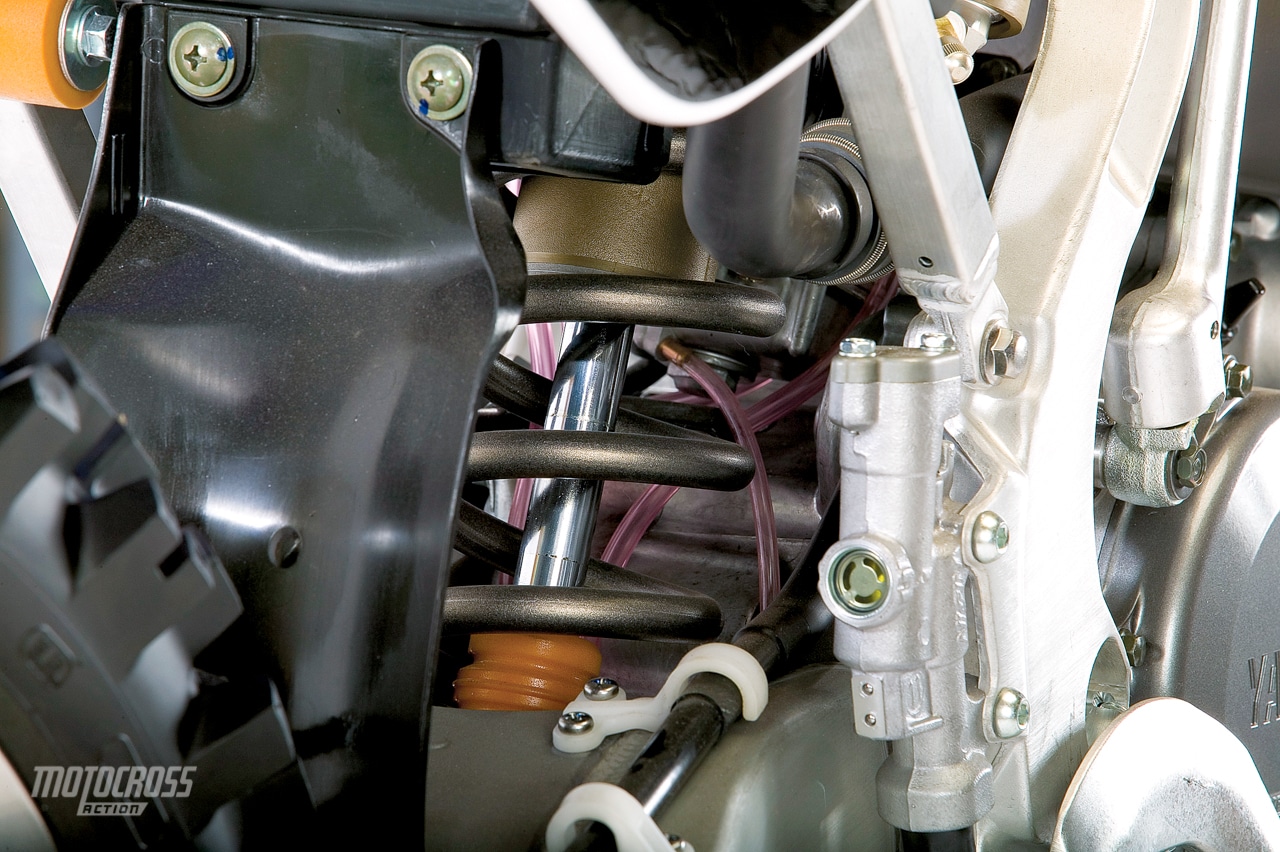
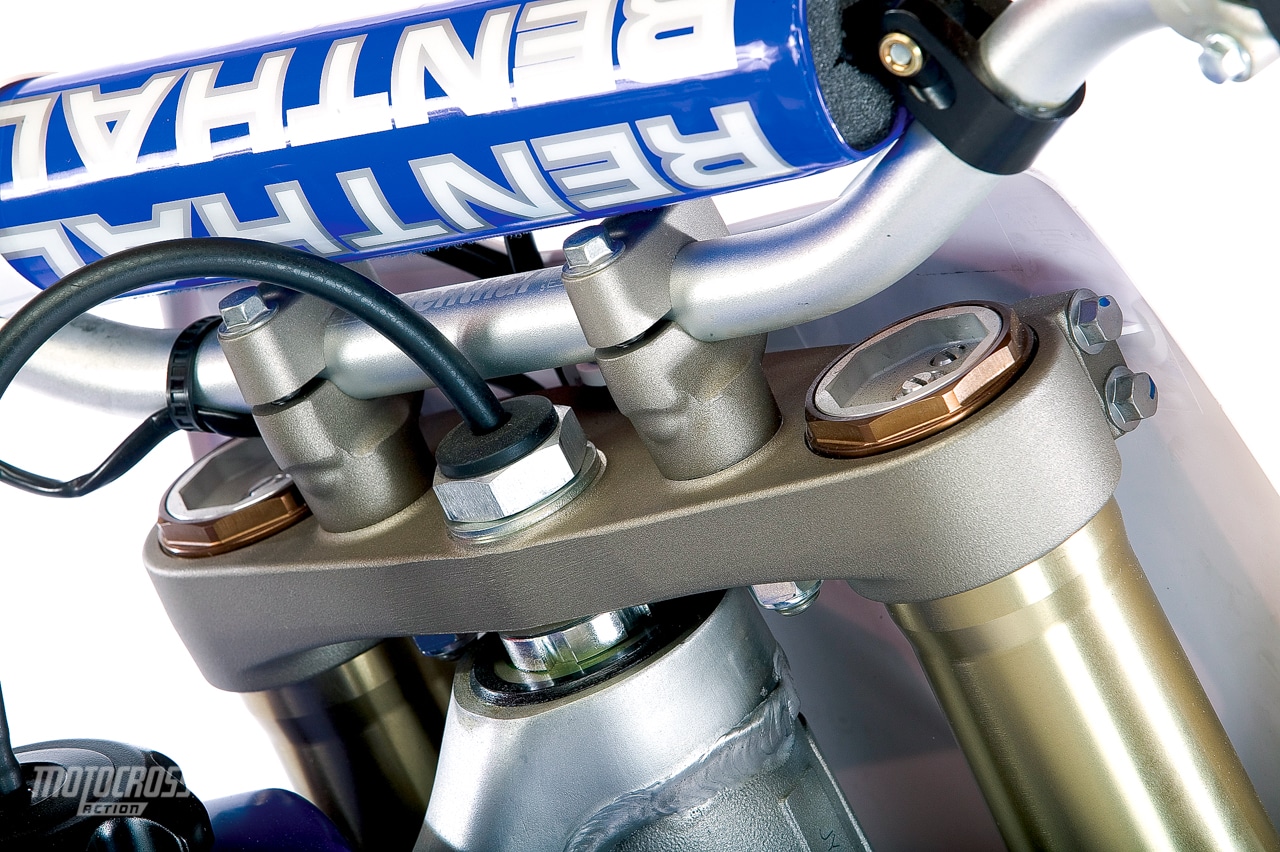
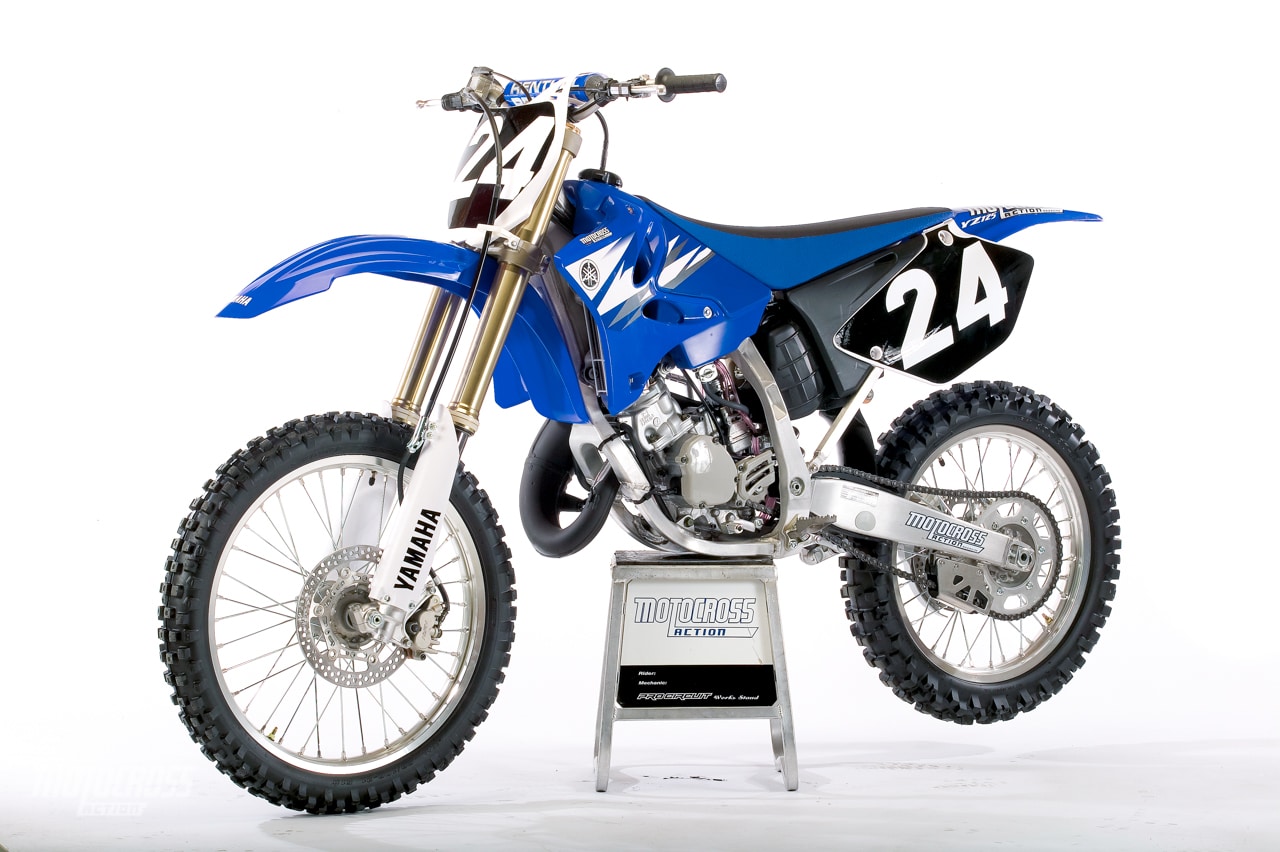
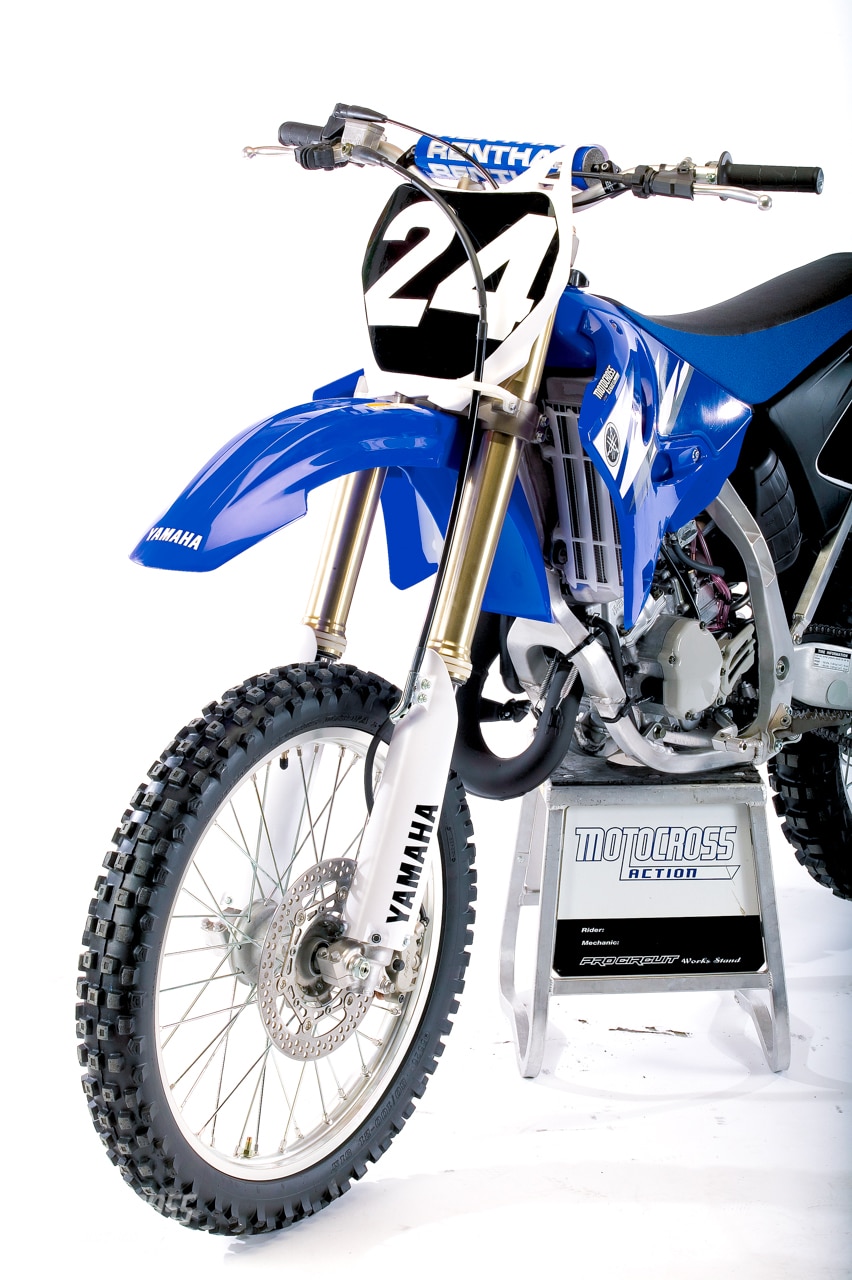
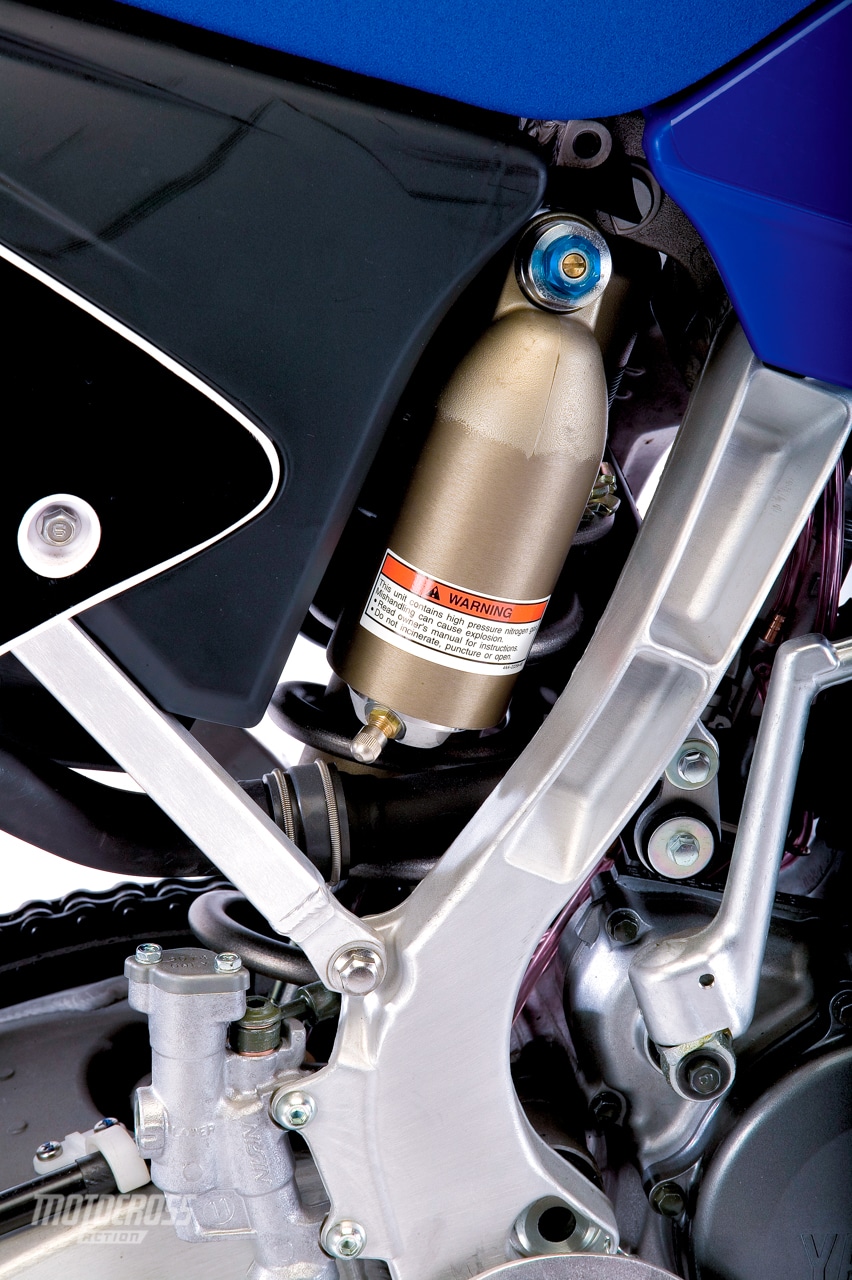



Comments are closed.